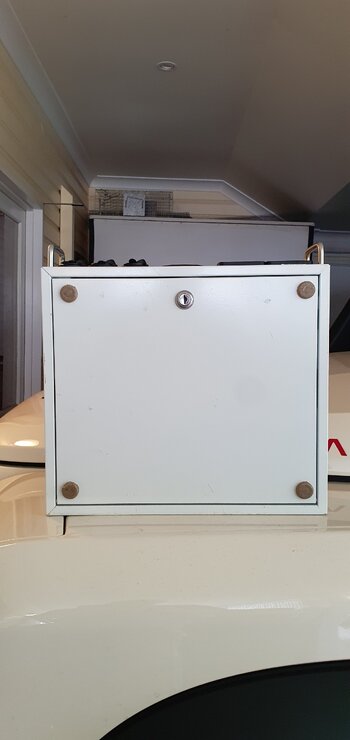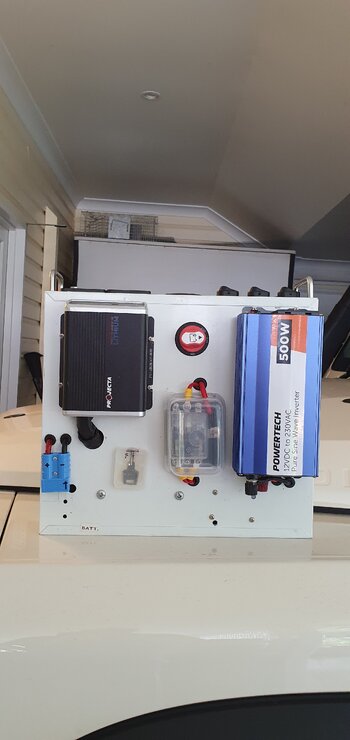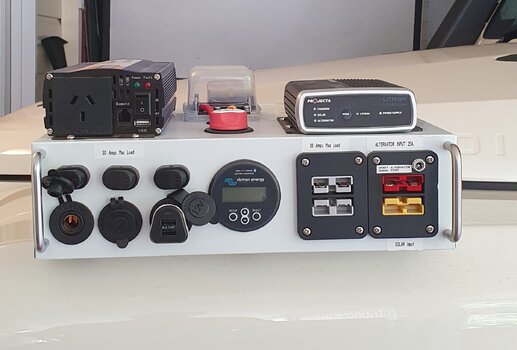I have used the INEOS dual battery system in remote Australia
running a fridge and appliances without issues, but I was not parked up for 3 days. I had no issue adjusting across from the traditional setup used in Australia. The CTEK system and the Moll batteries have an amazing ability to recharge even on short trips. It is very good combination, even if different from the usual setups in Australia. I think people who make adverse comments need to look at how the INEOS system works, before bad mouthing it. At least understand it before condemning it.
The aux battery in the INEOS setup does assist cranking if the main battery is flat or low on power.
In my setup the INEOS dual battery works well (esp with the solar panel), but I can plug in a third battery when I need the extra power (120 Ah Lithium). I had a battery box so I might as well use it. The Lithium battery in the BB allows me to use higher powered appliances if needed like a single induction cooktop.
For me I wanted power and flexibility, so in my setup:
- the solar panel tops up both batteries, when the sun is out (the Battery Box will only charge if the ignition is on);
- the solar panel supplies enough power for the fridge during the day, plus it charges the dual batteries;
- the second solar input (Red Anderson plug) with the rear Grey Anderson allows me to plug in my solar blanket for more solar charge (the CTEK250SE has max 20 amps solar input from memory);
- I can easily plug and unplug the battery box;
- if there is an issue with the BB, I just plug the fridge into the INEOS dual battery system.
Thanks for your comments
@TheDocAUS.
Interesting that you have found the onboard power sufficient. What's the watts output of your solar panel? and what's the amp draw of your fridge?
I have noticed significant depletion of the battery just by opening and closing doors without running the fridge or any other load drawing consumers from the onboard batteries. I have a 200W solar blanket that I have fed directly to the Crank battery (because that is where all the loads are coming from), via a 20A Victron MPPT controller. This set-up seems to work ok but not sure what is happening to the second battery. I probably should have got the CTEK250SE instead for solar input as I presume that would balance both batteries from solar?
I have seen the system show a charge rate of 189A when the battery is under 50% SoC (and have a photo to prove it) after sitting camped for 3 days, it still started no problem, but I will never do that again. I presume that charge rate is just to the primary battery, regardless, it is a healthy rate so I wonder what advantage the 250SE DC-DC provides over the current system other than solar input? Obviously a lithium service battery would not be able to be charged at that higher rate so a DC-DC would be needed in that case.
I like the idea of using the already onboard system, but I've been concerned (which is probably also why many are sceptical) about killing both batteries, particularly with potentially deep discharging/charging often. I carry a lithium jump starter, but relying on that often seems also dangerous. Hence my thought to upgrade the service battery to a larger Ah lithium to expand total Ah capacity already onboard so I don't need to be checking the SoC so often . However, not sure what the implications will be to the system's function. i.e. Would a lithium still assist cranking if needed? and will the trickle charge of crank battery still work?
Just for context... I have been using a similar, but smaller arrangement to yours, I use a pair of 40Ah Companion power stations in rotation to run the fridge, which has worked to this point... but it is close to the wire. One 40Ah will run my current fridge for about 24hours but if I upgrade to a bigger fridge (which I need to do for longer trips) and add Starlink, plus any other tech consumers that my daughter insists on bringing

, I'm going to struggle particularly if solar input dips, so I need to increase capacity. I've looked at battery boxes but they are BIG! and space is of a premium on longer trips (I travel with swag/RTT only). I had identified an area beside the fridge to attempt building my own battery compartment, but wondered if there is a way to better utilise the Ineos system and not have to add a large 3rd battery.
Appreciate others thoughts, particularly if anyone has (and I'm sure people have) changed over to a lithium service battery.






